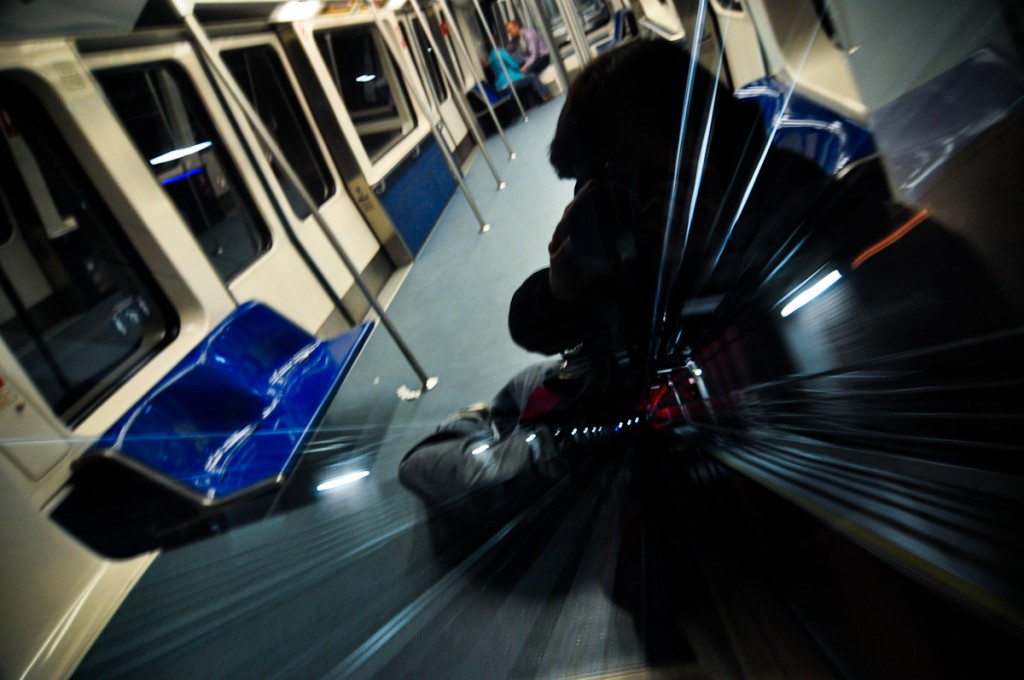
When a photograph lies infront of you, you uncounsly read it. You eye is unable to see more than just a tiny spot with full sharpness. So when you see a picture (unless it’s tiny) your eye scans it for certain patterns. Usually those are: foreground before background, light before dark and left before right.
When you check out the picture above, it starts as a seamlessly looking scene inside some sort of train. Then you continue towards the right (and dark) part and it starts getting confusing. Questions arise and confusion starts: How was it possible to take this picture? Are those two pictures in one? What’s the black silhouette on the right half? Where is the photographer?
There was absolutely no editing involved and it was a very spontanious shot I took. The reason I want to show you this one, is to demonstrate that a photograph can actually require some imagination (and brains) to actually understand whats going on.
You rarely get a picture that confusing and it has often to do with optical illusions. Many people ask me (since it hangs in kitchen) this but I myself have trouble explaining how this worked. I can only tell you how I took the picture, but not how optics can play this funny trick. To be honest, I don’t even care, because all that matters is the intriguing nature and beauty I saw and captured in that wiered instant where the viewer is inside and outside the train at the same time at the Barajas Airport in Madrid.


a precise dissection of the kognitive processing of the image. It reminds me that one does not “just” see a picture, but that there are a lot of complex processing steps, filters, habits, evaluations, assumptions etc involved.
a precise dissection of the kognitive processing of the image. It reminds me that one does not “just” see a picture, but that there are a lot of complex processing steps, filters, habits, evaluations, assumptions etc involved..